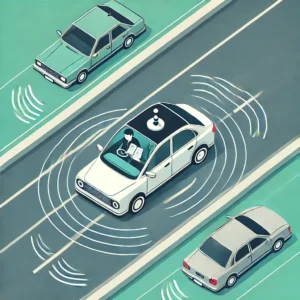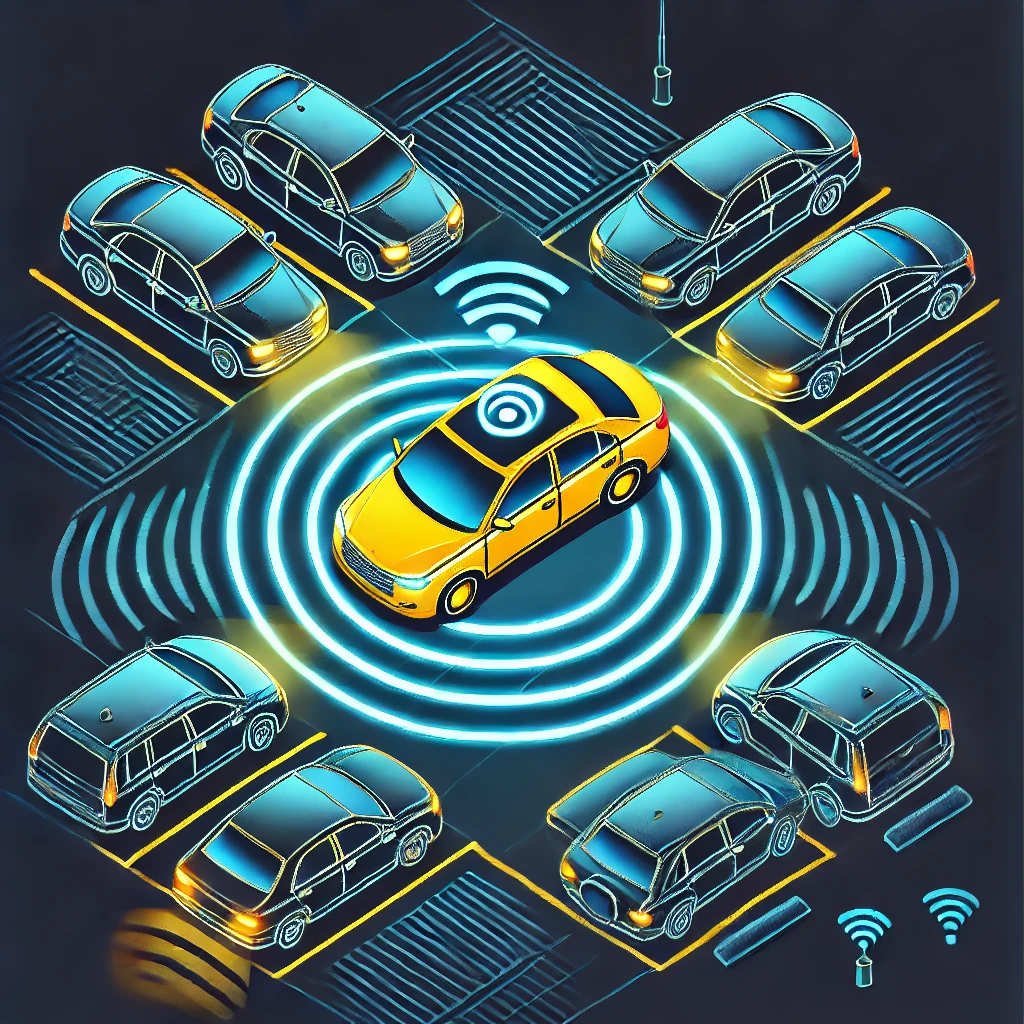Self-driving cars, once a concept of science fiction, are now closer to becoming a reality, thanks to the advancements in Artificial Intelligence (AI). As major automakers and tech giants race to develop fully autonomous vehicles, AI has emerged as the key enabler of this technology. With its ability to learn, adapt, and process vast amounts of data, AI is transforming the way we perceive transportation. In this blog, we will explore the role of AI in self-driving cars, its potential impact on the future, and the challenges it faces.
How AI Powers Self-Driving Cars
AI plays a pivotal role in enabling cars to operate autonomously by integrating multiple technologies such as computer vision, machine learning, and deep learning. These systems allow self-driving cars to analyze their environment, make real-time decisions, and navigate safely without human intervention.
- Computer Vision and Sensors: Self-driving cars rely heavily on a combination of sensors, cameras, radar, and lidar to perceive their surroundings. AI algorithms process the data from these sensors to create a real-time map of the environment. This map includes details like road conditions, the position of other vehicles, pedestrians, and obstacles. For instance, Tesla’s Autopilot system uses AI-powered computer vision to detect and identify objects, enabling the car to navigate accordingly.

- Machine Learning for Decision Making: One of the most crucial functions of AI in autonomous vehicles is decision-making. Machine learning algorithms allow cars to learn from vast datasets of driving scenarios, improving their ability to handle new and unpredictable situations. For example, when a car encounters an obstacle, AI algorithms assess the situation in milliseconds and determine the best course of action—whether to slow down, steer, or stop altogether.
- Deep Learning for Real-time Processing: Deep learning, a subset of machine learning, is employed to process large amounts of real-time data. This is essential for tasks such as object detection, lane recognition, and predicting the movements of nearby vehicles. AI models based on deep learning help self-driving cars differentiate between objects like pedestrians, bicycles, and other vehicles to ensure safe driving decisions are made.
- Natural Language Processing for Interaction: AI also facilitates interaction between the car and its passengers through Natural Language Processing (NLP). Autonomous cars equipped with AI-powered voice assistants can communicate with passengers, understand commands, and provide updates on the journey. For instance, companies like Waymo are integrating NLP to allow passengers to interact with the vehicle more seamlessly.
The Advantages of AI in Self-Driving Cars
The integration of AI in self-driving cars offers numerous benefits that extend beyond convenience. Here are some key advantages:
Improved Road Safety: Human error is responsible for 94% of road accidents, according to the National Highway Traffic Safety Administration (NHTSA). AI-driven vehicles have the potential to significantly reduce these numbers by minimizing distractions, improving reaction times, and eliminating driver fatigue. Autonomous vehicles can process information faster than humans and avoid accidents by anticipating risks and adjusting accordingly.

- Increased Accessibility: Self-driving cars can offer mobility solutions for individuals who are unable to drive, such as the elderly or disabled. With AI at the core, autonomous vehicles can provide transportation independence, allowing everyone to travel safely without the need for human intervention.
- Enhanced Traffic Flow and Reduced Congestion: AI can improve traffic management by optimizing routes and reducing bottlenecks. Autonomous vehicles communicate with each other and share data about road conditions and traffic patterns, resulting in smoother traffic flow. This could reduce congestion and shorten commute times, particularly in urban areas.
- Fuel Efficiency and Environmental Impact: AI can enhance fuel efficiency by adopting optimal driving practices such as smoother acceleration and deceleration. With AI’s ability to predict traffic conditions, self-driving cars can also reduce idling time, ultimately leading to lower emissions and a smaller carbon footprint.

Challenges Facing AI in Self-Driving Cars
Despite its promising potential, there are still several challenges AI must overcome before fully autonomous vehicles become mainstream.
- Technical Challenges: While AI has made remarkable progress, achieving Level 5 autonomy—where a vehicle can handle all driving tasks without human intervention—remains a significant hurdle. Issues like bad weather conditions, complex traffic environments, and limited infrastructure support still pose technical challenges. For example, lidar systems, which help cars “see” their surroundings, can be affected by heavy rain or snow, limiting the vehicle’s ability to navigate.
- Ethical Dilemmas: AI-driven vehicles may face ethical challenges in decision-making scenarios. For instance, if an accident is unavoidable, how should the AI prioritize the safety of passengers versus pedestrians? These moral dilemmas raise questions about programming and responsibility, which require careful consideration before full-scale deployment.
- Regulatory and Legal Hurdles: The regulatory landscape for autonomous vehicles is still in its early stages. Governments worldwide are grappling with creating a legal framework that balances innovation with safety. AI in self-driving cars must adhere to a stringent set of regulations and standards, which can vary significantly between countries and regions. Additionally, liability issues—who is responsible in the event of an accident—are still unresolved.
- Public Acceptance and Trust: While the idea of self-driving cars is exciting, public trust remains a barrier to widespread adoption. Concerns about the safety and reliability of AI-driven vehicles, along with fear of technological failure, must be addressed through rigorous testing and transparent communication from companies involved in autonomous vehicle development.
The Road Ahead for AI in Autonomous Cars
As AI technology continues to evolve, the future of self-driving cars looks promising. Major players in the industry, including Tesla, Waymo, and Cruise, are conducting extensive research and testing to improve their AI systems. Governments are also stepping in, with cities like Phoenix and San Francisco allowing limited deployment of autonomous vehicles on their streets.
The journey towards fully autonomous vehicles may be gradual, but the impact of AI on the automotive industry is undeniable. Self-driving cars have the potential to revolutionize transportation by making roads safer, reducing congestion, and offering more accessible and efficient travel options.
In conclusion, AI is the driving force behind self-driving cars, and as it continues to develop, we are moving closer to a future where autonomous vehicles will become a common sight on our roads. While challenges remain, the potential benefits of AI in this field are too significant to ignore.



You actually make it seem so easy with your presentation but I find this matter to be really something which I think I would never understand. It seems too complex and extremely broad for me. I’m looking forward for your next post, I’ll try to get the hang of it!